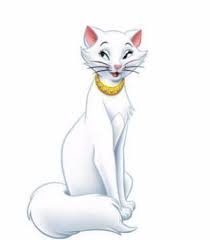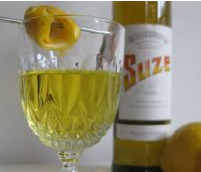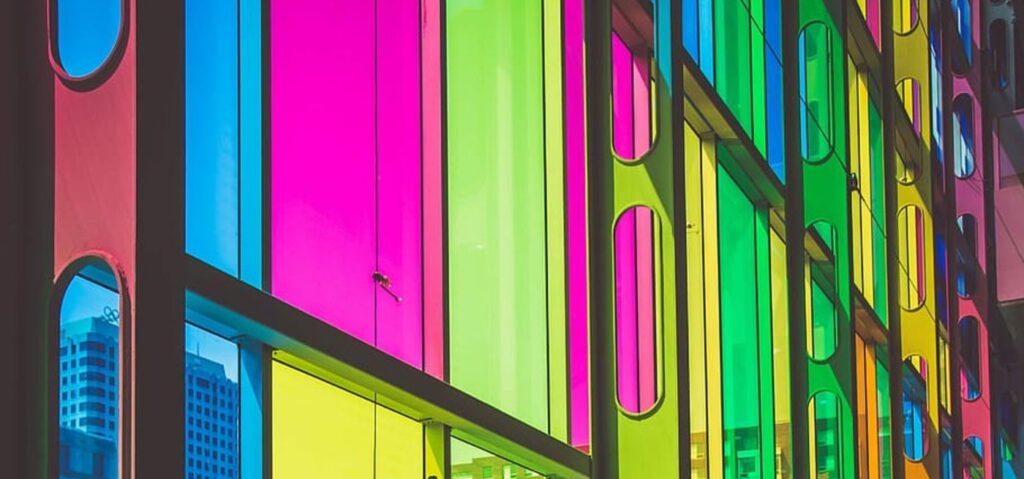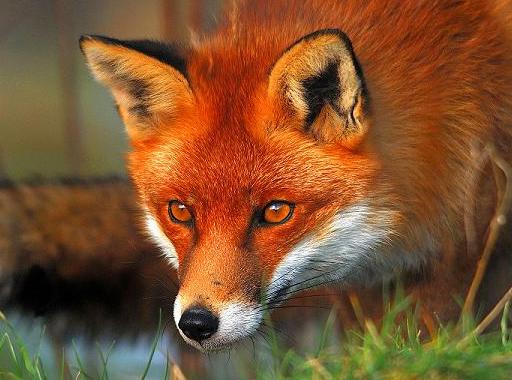Great news about the environment - share your stories

According to “breakthrough” new research, funded by a clutch of consumer goods firms, French scientists have discovered a plastic-eating enzyme they claim could offer an innovative recycling solution for millions of tonnes of toxic plastic waste material.
http://econews.com.au/64104/mutant-enzyme-created-by-scientists-recycles-plastic-bottles-in-hours/
CORONAVIRUS FREE ZONE PLEASE (unless it relates to good news about the environment)


Great news, I do love my honey, I buy local honey only.

That is good news, must admit we have been seeing some bees in the roses of late.

CSIRO, Australia’s national science agency, is developing a major research program to tackle plastic waste and reimagine the future of plastics.
The Plastics Mission, one of 12 missions in development by CSIRO is using science and technology, to address Australia’s plastics waste issue.
Each year, 90 billion tonnes of primary materials are extracted and used globally for plastics. Only 9 per cent is recycled, with economic, social, environmental and health impacts. In Australia, we generate an estimated 67 million tonnes of waste every year.
CSIRO Senior Principal Research Scientist Dr Denise Hardesty said CSIRO was working with collaborators through the Plastics Mission to apply technological solutions to the entire plastics supply chain and prevent rubbish ending up in the environment.
"Our research is helping to understand the extent of plastic pollution in Australia and globally, and how to reduce it," Dr Hardesty said.
"Rethinking plastic packaging is just one way of reducing waste, through better design, materials and logistics. We can also transform the way we use, manufacture and recycle plastics by creating new products and more value for plastics."
New solutions under development include plastics detection using artificial intelligence, implementing and optimising waste monitoring systems, and establishing recycling standards and best practices to reduce contamination.
Machine learning and camera sensor technologiesMachine learning and camera sensor technologies are fast-tracking data collection to detect and classify items of rubbish in our rivers.
This project, in partnership with Microsoft, helps inform waste management strategies, highlighting where intervention is needed to stop plastic from entering waterways.
Microsoft Australia chief technology officer Lee Hickin highlighted the importance of supporting the efforts to aid in the development of a national baseline to measure litter accumulation in the environment, which was key for measuring and reacting to change.
"Microsoft artificial intelligence image recognition is underpinning the identification of plastic pollution," Mr Hickin said.
"By using AI to accelerate the detection and classification of rubbish in our waterways, we can simply react more quickly and work to improve the quality of water faster than if done manually."
Camera sensor technologies are also being applied to waste traps, commonly used by councils to prevent rubbish flowing through stormwater drains into the environment.
City of Hobart Lord Mayor Anna Reynolds said the City was working with CSIRO to develop an autonomous sensor network to provide real-time reporting on the amount of rubbish being captured.
"Gross pollutant traps capture rubbish that ends up in stormwater drains," Cr Reynolds said.
"But maintenance can be costly and time-consuming.
"By tapping into CSIRO’s modelling capabilities, we can optimise our operations to avoid the release of pollutants, while improving safety and reducing environmental harm."
Turning resources to richesCSIRO is also collaborating with Chemistry Australia and their Plastics Stewardship Australia initiative to inform ways to more sustainably use, re-use and recycle plastic products.
Director Strategy Energy and Research for Chemistry Australia Peter Bury said new technologies and initiatives to recover and transform what are important resources into commodities supports the UN's Sustainability Development Goals and can help drive Australia’s circular economy.
"With a pending export ban for Australian waste, the time is now to address the plastic waste problem," Mr Bury said.
"Leading science will help establish standards to ensure product security and inform decision-making.
"Leveraging the capability of industry for plastic products at their end of life will also generate new types of products and design, and help build new industries and jobs across a range of sectors."

And you can add much more waste with all the PPE gear, masks and sanitizer bottles being used, also in hospitals they are now using bottled water instead of the jug from the tap.

Lets hope they put it into operation expediently.
Few months back I read an article where they turn bottle tops into prosthesis

Yes we can only hope and vote.

Not sure if this is good or bad Incognito!
Researchers from California Polytechnic State University examined data collected by the public on 58,506 nests from 142 species across North America.

Probably not good, because it upsets the natural balance and order of nature. Poor things are trying to adapt to human's intrusion all the time. I think though more concern is the millions of toxic particles floating through the air, the smaller the animal the more damage it does to reproduction etc.

The first recycled and recyclable bread tag launched in Australia, by Tip TopEco Voice | November 26, 2020 | Reply
 In an Australian first, Tip Top today announces a move to more sustainable packaging, introducing 100 per cent recycled and recyclable cardboard bread tags, designed to give you the same great Tip Top freshness.
In an Australian first, Tip Top today announces a move to more sustainable packaging, introducing 100 per cent recycled and recyclable cardboard bread tags, designed to give you the same great Tip Top freshness.
Launching on South Australian shelves, the initiative will remove 11 million plastic bread tags from local waste streams by the end of 2021 and will eventually eliminate over 400 million plastic tags per year as they roll out nationally.
The transition to recyclable bread tags is the first of a series of packaging innovations under the Company’s new vision, “Feeding Aussie families more sustainably”.
Graeme Cutler, Director of Sales and CSR Lead, Tip Top ANZ said, “Our goal is that by 2025, all Tip Top packaging will be 100 per cent recyclable, reusable or compostable to help close the loop.
“Developed and produced through rigorous testing, the new sustainable bread tags promise no compromise on freshness and taste. Customers can expect to be provided with the same Tip Top quality that millions of Australians enjoy freshly baked every day and have trusted since 1958,” said Mr Cutler.
Tip Top encourages consumers to recycle their cardboard bread tags in kerbside recycling bins by tucking the tag securely inside other paper or cardboard products, such as an envelope or paper bag, giving them the best chance of being recycled into a new product rather than being sent to landfill.
Paul Klymenko, CEO of Planet Ark said, “Small plastic items such as bread tags are problematic in the waste system. It is great to see this innovation by Tip Top in using 100% recycled content which can then be recycled when placed in kerbside recycling correctly. It is pleasing to see circular economy thinking being applied as they are designing out problematic plastic waste and keeping resources in use.”
Cardboard bread tags can be found on all Tip Top fresh, sliced breads on South Australian shelves from today.
For more information on Tip Top’s sustainability goals visit: https://www.tiptop.com.au/

The first recycled and recyclable bread tag launched in Australia, by Tip TopEco Voice | November 26, 2020 | Reply
 In an Australian first, Tip Top today announces a move to more sustainable packaging, introducing 100 per cent recycled and recyclable cardboard bread tags, designed to give you the same great Tip Top freshness.
In an Australian first, Tip Top today announces a move to more sustainable packaging, introducing 100 per cent recycled and recyclable cardboard bread tags, designed to give you the same great Tip Top freshness.
Launching on South Australian shelves, the initiative will remove 11 million plastic bread tags from local waste streams by the end of 2021 and will eventually eliminate over 400 million plastic tags per year as they roll out nationally.
The transition to recyclable bread tags is the first of a series of packaging innovations under the Company’s new vision, “Feeding Aussie families more sustainably”.
Graeme Cutler, Director of Sales and CSR Lead, Tip Top ANZ said, “Our goal is that by 2025, all Tip Top packaging will be 100 per cent recyclable, reusable or compostable to help close the loop.
“Developed and produced through rigorous testing, the new sustainable bread tags promise no compromise on freshness and taste. Customers can expect to be provided with the same Tip Top quality that millions of Australians enjoy freshly baked every day and have trusted since 1958,” said Mr Cutler.
Tip Top encourages consumers to recycle their cardboard bread tags in kerbside recycling bins by tucking the tag securely inside other paper or cardboard products, such as an envelope or paper bag, giving them the best chance of being recycled into a new product rather than being sent to landfill.
Paul Klymenko, CEO of Planet Ark said, “Small plastic items such as bread tags are problematic in the waste system. It is great to see this innovation by Tip Top in using 100% recycled content which can then be recycled when placed in kerbside recycling correctly. It is pleasing to see circular economy thinking being applied as they are designing out problematic plastic waste and keeping resources in use.”
Cardboard bread tags can be found on all Tip Top fresh, sliced breads on South Australian shelves from today.
For more information on Tip Top’s sustainability goals visit: https://www.tiptop.com.au/

For years I've eaten Woolies Pane di casa seeded bread which comes in a paper bag with paper labels
Hence the above seems like a publicity stunt to sell their bread.

Did not know other brands used them Suze because I stopped buying and eating bread ages ago.

For years I've eaten Woolies Pane di casa seeded bread which comes in a paper bag with paper labels
Hence the above seems like a publicity stunt to sell their bread.

That is good news, must admit we have been seeing some bees in the roses of late.


While renewable energy uptake and solutions continue to grow, many can only generate electricity in the right environmental conditions. For example, solar panels can only capture and convert visible light into renewable energy and must be facing the sun to do so. What is more, solar farms are only built horizontally, never vertically and are often placed on prime arable farmland.
The solution? Invented by 27-year-old Carvey Ehren Maigue from Mapua University in the Philippines, AuREUS System Technology is a material that can be attached to a pre-existing structure or surface. Utilizing the natural scientific principles behind the northern and southern lights, it harvests UV light and convert this into visible light to generate electricity.
Using ultraviolet rays, the sun could be shining, or it could be cloudy: Carvey’s material will still generate electricity.
RELATED: Students Invent Door Handle for Public Bathrooms That Can Clean and Sanitize Itself
The particles in his material absorb UV light causing them to glow. As the particles “rest” they remove excess energy. This excess energy bleeds out of the material as visible light, which can then be transformed into electricity. Current prototypes successfully achieve this on windows and external building structures.
Not only has Carvey invented an efficient process to generate renewable energy, but the materials he uses to do so create a closed-loop design process, so nothing is wasted. This is because Carvey uses a substrate extracted from waste crops—such as rotting fruits and vegetables—to create a durable, translucent and moldable material as the basis for AuREUS.
“As a farmer, I see great potential in Carvey’s technology to generate clean renewable energy,” said James Dyson, Founder and Chief Engineer at Dyson in a statement. “AuREUS… conserves space using pre-existing structures, utilizes current resources and waste streams, and supports local agricultural communities. His bright idea to use upcycled crop waste develops a closed loop system. This element of his invention is particularly clever and shows the close link between farming and technology.”
Carvey said of receiving the first annual sustainability award out of a record 1,800 entries: “Winning the James Dyson Award is both a beginning and an end. It marked the end of years of doubting whether my idea would find global relevance… I want to create a better form of renewable energy that uses the world’s natural resources, is close to people’s lives, forging achievable paths and rallying towards a sustainable and regenerative future.”
The student plans to use his $40,000 prize money to further develop his invention.


HUNDREDS HAVE ALREADY RECEIVED IT AT OVER 50 HOSPITALS

Yes Banjo...splendid news about the rollout in the UK...it certainly is V Day!!!


Very proud of our former PMs!!!!!


<div>
</div>
Coronavirus crisis: Queen Elizabeth II to be ‘among first’ to get Pfizer BioNTech vaccine in UK
It is expected the royal family, including Prince Charles and Camilla and Prince William and Kate will follow suit and make it public once they have had the vaccine.
The royal family also played an important role in publicising the then-newly discovered polio vaccine in the 1950s, with both Prince Charles and Princess Anne having the life-saving jab.

LOLOLOL .......believe anything huh???? LOLOLOL ........... "they" could be injecting heroin/vitamins/flu vacc. ANYTHING!!!! ...and you 'd believe it???? "Sheeple Sophie" baaa baaa baaa roflmao

...BTW - forgot to thank you for your "Glad Tidings" - nice! :) :) :) (if only you meant it) Hahahahaaa



Bees bounce back from drought and fires as NSW rains bring bumper crops.
About 10,000 hives burnt in last summer's fires have been replaced and farmers are seeing the benefits, Luke Wong ABC Central West.
Apiarists and crop farmers are abuzz at "probably the best start to a bee season in 20 years" after losing a third of the commercial population by the end of last summer.
The honey industry has also enjoyed a boost. In southern NSW production has increased by between 60 and 100 per cent since 2019.
https://www.abc.net.au/news/2020-11-07/rain-prompts-bee-recovery-after-drought-and-fires/12848622